Preventing circuit overloads starts with understanding your electrical system’s limits. To avoid overloading circuits, distribute high-energy appliances across multiple outlets, use power strips with surge protectors, and unplug devices when not in use. Regularly check for flickering lights, tripping breakers, or warm outlets—common signs of overload. If your breakers trip frequently, consider upgrading your electrical panel or adding new circuits. Prioritize safety by scheduling routine electrical inspections, and always call a professional electrician for complex issues or repeated overloads.

Are you wondering why your lights flicker or your breakers trip out of nowhere? You might be dealing with circuit overloads. It’s like when you try to carry too many grocery bags at once and end up dropping everything—it’s just too much!
Circuit overloads can be more than just a nuisance; they can lead to serious electrical problems in your home. But don’t worry! With a little know-how, you can prevent these issues and keep your home safe. Let’s explore how!
What is a Circuit Overload?
Circuit overloads occur when too much electrical demand is placed on a single circuit, similar to how a crowded road causes a traffic jam or a slow internet connection when too many devices are connected.
Each circuit in your home is designed to handle a specific amount of electricity, measured in amps. When you exceed this limit by plugging in too many devices or high-energy appliances, the circuit breaker automatically trips to cut off the power.
This safety feature prevents wires from overheating, which could otherwise lead to electrical fires or damage to your devices.
Circuit overloads are more common than you might think, especially in homes with older wiring or circuits that were not designed to handle today’s high-powered gadgets.
Everyday appliances like air conditioners, space heaters, and microwaves draw a significant amount of power and can easily push a circuit beyond its limits if used simultaneously on the same line.
This is why circuit breakers play a crucial role—they act as a safeguard to protect your home’s electrical system from becoming overloaded and potentially dangerous.
Common Warning Signs
Flickering Lights
If your lights are flickering or dimming when you turn on appliances like the microwave or vacuum cleaner, that’s a sign that your circuit might be overloaded. This happens because the power is being spread too thin, like trying to water a large garden with a tiny hose.
Flickering lights can be annoying but also a sign that something isn’t right with your electrical load. It’s best not to ignore this, as it could lead to more serious issues down the line.
Frequent Tripping of Circuit Breakers
Circuit breakers are designed to shut off when there’s too much load, protecting your home from potential electrical fires. If your breakers are tripping more often than usual, it’s not just annoying—it’s a clear warning that something’s off with your electrical system.
Constantly resetting your breakers means your circuits are working harder than they should. This can wear them down faster and leave you with bigger problems, like damaged appliances or even electrical fires. Pay attention to frequent trips as your system’s way of telling you it’s overloaded.
Burning Smell or Warm Outlets
A burning smell near your outlets or if they feel warm to the touch is a major red flag that your circuits are overloaded. This is a serious sign that your electrical system is under stress and could be at risk of causing a fire.
Turn off your devices immediately if you notice this and consider calling a professional to inspect your system. It’s always better to be safe than sorry when dealing with potential electrical hazards. Never ignore these signs, as they could lead to dangerous situations.
How to Check Your Circuits for Overload
When it comes to handling your home’s electrical system, safety should always come first. If you’re unsure about any part of the process, it’s always best to reach out to a licensed professional. Attempting to check circuits or handle electrical issues without proper knowledge can be dangerous. For peace of mind, don’t hesitate to call in a professional electrician.
Step-by-Step Guide on Checking Your Home’s Circuits
To make sure your circuits aren’t overloaded, it’s important to understand which circuits are connected to which areas of your home. Here’s a step-by-step guide to help you:
- Turn Off All Breakers: Begin by turning off all the breakers in your electrical panel. This will ensure that no power is flowing through your circuits.
- Identify Circuit Connections: Next, turn the breakers back on one at a time. As each breaker is turned on, check which outlets, lights, and appliances are powered by that specific circuit. This will help you identify what’s connected to each circuit.
- Note Circuit Assignments: Keep a detailed note of which areas and devices are on each circuit. This step is crucial because it helps you see if certain circuits are taking on too much load compared to others.
- Monitor Usage: Once you know what’s connected where, look at how many devices are plugged into each circuit. Circuits with lots of high-power devices like space heaters, microwaves, or air conditioners are more likely to get overloaded.
- Adjust as Needed: If you find that one circuit is handling too many high-energy devices, consider redistributing some devices to other circuits to balance the load more effectively.
By following these steps, you can prevent overloads and ensure that your home’s electrical system runs smoothly.
Using Simple Tools Like a Circuit Tester
A circuit tester is a handy tool that can help you go one step further in checking your circuits. Here’s how you can use one:
- Plug in the Tester: Simply plug the circuit tester into an outlet. It will immediately start analyzing the connection.
- Read the Results: The tester usually has indicators that light up to show whether the circuit is functioning correctly or if there’s an issue, like poor wiring or an overload.
- Test Multiple Outlets: Move through your home and test various outlets on different circuits. This will give you a comprehensive view of your electrical system’s health.
- Identify Problems Early: Regularly testing your circuits can help you spot potential overloads or other electrical issues early, before they turn into more serious problems.
- Keep it Handy: Circuit testers are affordable and easy to use, making them a must-have tool for every homeowner. Keeping one around can save you a lot of trouble and help you maintain a safe electrical environment in your home.
Using these steps and tools, you can easily keep track of your circuits and avoid the stress and potential danger of circuit overload. However, if at any point you feel uncertain or spot any signs of a more serious issue, it’s always best to reach out to a licensed electrician. Electrical work can be complex, and a professional can ensure that your home’s system is both safe and efficient.
Simple Steps to Prevent Circuit Overloads
Preventing circuit overloads doesn’t have to be complicated. By following some simple steps, you can keep your home safe and your circuits running smoothly. Here’s how:
Don’t Overload Outlets
Avoid plugging too many devices into a single outlet, especially high-energy appliances like heaters or microwaves. Using outlet extenders or multiple power strips can be tempting, but this puts a lot of strain on your circuit and increases the risk of circuit overloads.
Instead, try to distribute your devices across multiple outlets in different rooms. This way, you won’t be putting too much demand on any one circuit.
Spread Out Your Electrical Usage
Spread out your use of high-energy appliances throughout the day. For example, avoid using the dishwasher, washing machine, and microwave all at the same time.
This reduces the load on your circuits, helping to prevent tripping breakers and other issues. By managing your usage wisely, you can keep your circuits from becoming overwhelmed.
Upgrade Your Electrical System
If you live in an older home or frequently experience circuit overloads, it might be time to consider upgrading your electrical system. Adding new circuits or upgrading your panel can provide more capacity for modern electrical needs.
This is especially important if you’ve added new appliances or renovations to your home that demand more power. An upgraded system can handle these demands safely.
Use Energy-Efficient Appliances
Switching to energy-efficient appliances can significantly reduce the load on your circuits. Modern appliances use less power while delivering the same or even better performance.
Look for ENERGY STAR-rated devices, which are designed to consume less electricity. This simple change can help you avoid overloads and even save on your energy bills!
Regularly Inspect Your Electrical System
Make it a habit to check your electrical system regularly. Look for signs of wear and tear, like frayed wires or discolored outlets.
Keeping an eye on the condition of your wiring and outlets can help you catch potential issues before they lead to overloads. Regular inspections, even just a quick look every few months, can be a lifesaver for your home’s electrical health.
Use Power Strips with Surge Protectors
Using power strips with built-in surge protectors can help manage the load and provide an extra layer of safety.
Surge protectors can shield your devices from sudden spikes in electricity, which can occur during an overload. Not only do they help distribute power more evenly, but they also offer protection to your valuable electronics.
Safe Usage Tips for Electrical Devices
Keeping your home safe from circuit overloads also involves using your electrical devices wisely. Here are some tips to help you use your devices safely and efficiently:
Avoid Using Extension Cords Permanently
Extension cords are great for temporary fixes, but they’re not meant to be a permanent solution. Using them all the time can lead to circuit overloads and even pose a fire risk.
If you find yourself relying on extension cords regularly, it might be time to add more outlets or upgrade your electrical system. Always make sure any extension cords you do use are in good condition and rated for the devices you’re powering.
Turn Off Appliances When Not in Use
One of the easiest ways to prevent overloads is by simply turning off appliances when you’re not using them. This not only reduces the load on your circuits but also helps save energy.
Items like TVs, computers, and chargers still draw power even when they’re in standby mode, so unplugging them when not in use can make a big difference. Get into the habit of switching off and unplugging to keep your home safe and your energy bills lower.
Keep Appliances in Good Condition
Regular maintenance of your appliances is crucial for safe usage. Damaged cords, old appliances, and worn-out parts can increase the risk of electrical problems, including overloads.
Check your devices regularly for any signs of damage, like frayed wires or exposed components, and replace or repair them as needed. Keeping your appliances in good working order ensures they run efficiently and safely.
What to Do if You Suspect a Circuit Overload
Even with the best precautions, sometimes circuit overloads can still happen. If you suspect a circuit overload in your home, it’s important to act quickly to prevent any damage or potential hazards. Here’s what you should do:
Immediate Steps to Take
If you notice signs of a circuit overload, like flickering lights or a tripped breaker, take immediate action:
- Turn Off and Unplug Devices: Start by turning off all devices and unplugging them from the overloaded circuit. This helps reduce the load and prevents further stress on the circuit.
- Reset the Circuit Breaker Safely: Once everything is unplugged, locate your electrical panel and find the tripped breaker. Flip it back to the “on” position to reset it. If it trips again right away, leave it off and consider this a serious sign that the circuit is still overloaded or there’s another underlying issue.
- Check for Burning Smells or Warm Outlets: If you smell something burning or feel warm outlets, do not ignore it. This is a clear sign that the circuit overload is severe and could lead to a fire. In this case, leave the circuit off and call a professional immediately.
These steps can help you quickly respond to circuit overloads and minimize the risk of damage. It’s always better to address the problem as soon as you notice it rather than letting it escalate.
When to Call an Electrician
Sometimes, the signs of a circuit overload indicate a deeper problem that requires professional help. Here’s when you should call an electrician:
- Repeated Circuit Overloads: If your circuits are constantly overloading despite your best efforts to balance the load, it’s time to call an electrician. Frequent overloads can signal that your electrical system is outdated or that there’s an issue with the wiring that needs expert attention.
- Breaker Won’t Reset: If your circuit breaker trips and won’t reset, this could mean there’s a persistent overload or a more serious electrical problem. An electrician can assess the situation, identify the cause, and provide a safe solution.
- Signs of Electrical Damage: Burning smells, warm outlets, or visible damage to wires are all signs that you need professional help. An electrician can inspect your system for damage and make necessary repairs to prevent future circuit overloads.
Knowing when to bring in a professional is key to keeping your home safe from circuit overloads and other electrical hazards. It’s always better to be safe and get expert help rather than risk your safety by trying to fix serious electrical issues on your own.
Keep Your Home Safe from Circuit Overloads with Gardner Electrical!
Worried about circuit overloads in your home? Don’t wait until it’s too late! At Gardner Electrical, we’re here to help you keep your electrical system running safely and efficiently in Rockwall, Royse City, Forney, TX, and surrounding areas.
Our team of expert electricians can assess your system, make necessary upgrades, and ensure your home is protected. Contact Gardner Electrical today and let us handle your electrical needs with care!

FAQs About Circuit Overloads
Can Circuit Overloads Damage My Home?
Yes, circuit overloads can cause significant damage to your home. When a circuit is overloaded, it can lead to overheating of wires, which increases the risk of electrical fires. Over time, frequent overloads can also damage your appliances and reduce their lifespan.
How Often Should I Have My Electrical System Inspected?
It’s a good idea to have your electrical system inspected every 3-5 years, or sooner if you notice frequent circuit overloads or other electrical issues. Regular inspections can catch problems early, like outdated wiring or circuits that are prone to overloading, and help you make necessary upgrades.
What Should I Do If My Breaker Keeps Tripping?
If your breaker keeps tripping, it’s a sign of circuit overload or another issue. Start by unplugging devices from the overloaded circuit and try resetting the breaker. If it continues to trip, it’s best to call an electrician.
How Can I Tell If My Circuit Is Overloaded?
Common signs of circuit overload include flickering lights, frequently tripped breakers, a burning smell, or warm outlets. You might also notice that certain devices aren’t working as well when other high-energy appliances are running. Paying attention to these signs can help you identify overloads early and take steps to reduce the load on your circuits.
Can Upgrading My Electrical System Prevent Circuit Overloads?
Yes, upgrading your electrical system is one of the best ways to prevent circuit overloads, especially if you live in an older home. Adding new circuits, upgrading your breaker panel, or installing dedicated circuits for high-energy appliances can all help distribute the load more evenly.
The post How to Prevent Circuit Overloads appeared first on Gardner Electrical.






